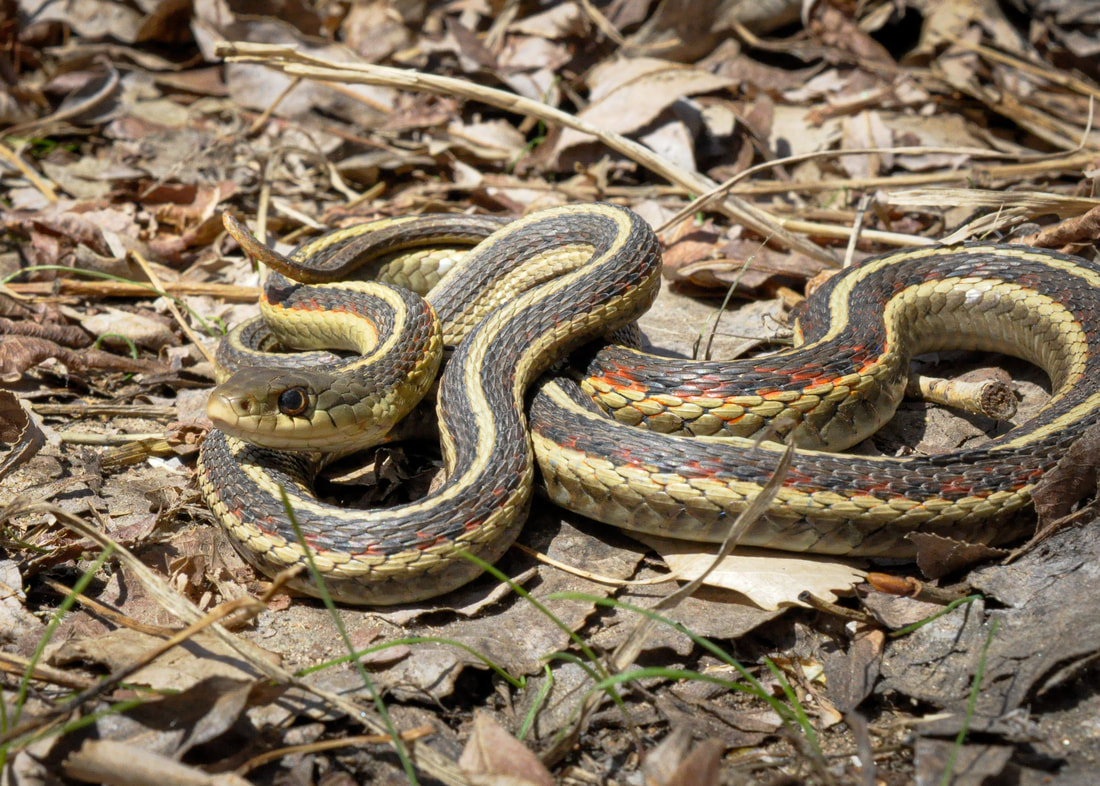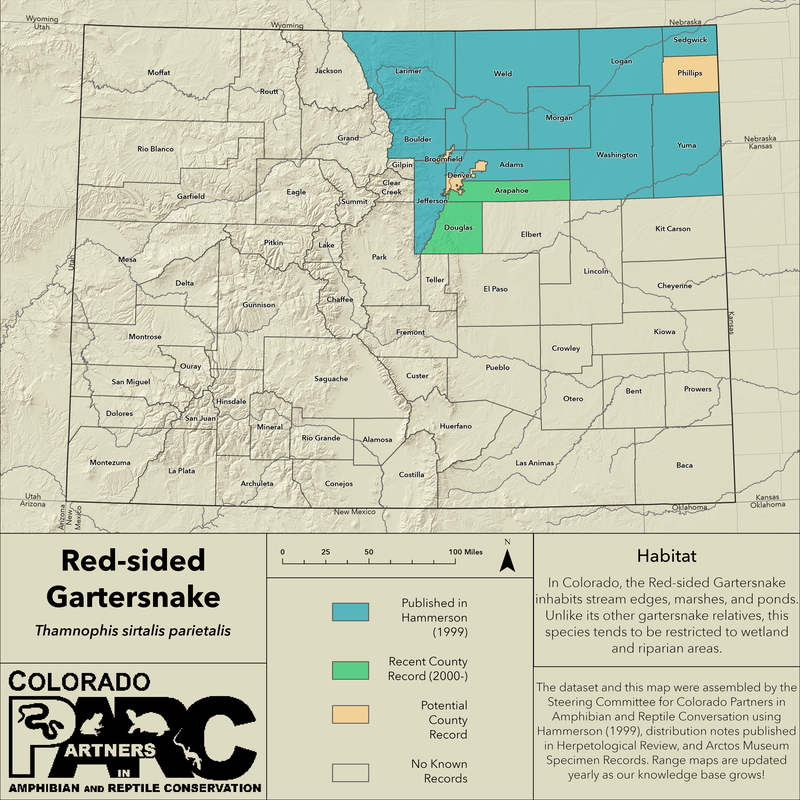|
Identification:
Distribution: Red-sided Gartersnakes are found in northeastern Colorado along the South Platte River drainages and surrounding areas at elevations below 6,000 feet. They are also found in the North Fork Republican River at elevations between 3,500-3,600 feet. (Hammerson 1999)
Activity: Activity occurs from mid-March through early October. These snakes are usually diurnal except for the hottest part of the day, but nocturnal foraging activity is sometimes known to occur. Brumation sites may be underground or even underwater in wetland areas. (Hammerson 1999)
Conservation Status: Designated as a non-game species in Colorado. This snake is listed as a Species of Concern and a Tier 2 Species of Greatest Conservation Need (Colorado Parks and Wildlife, 2022). Can be locally abundant, but are likely in decline.
NatureServe rank: T5 (Globally Secure Subspecies), (State unranked) |
Habitat: In Colorado, the Red-sided Gartersnake inhabits stream edges, marshes, and ponds. Unlike its other gartersnake relatives, this species tends to be restricted to wetland and riparian areas.
(Hammerson 1999) Diet: Red-sided Gartersnakes are opportunistic feeders, primarily feeding on amphibians and their larvae, fish, and invertebrates. Other food items are sometimes consumed, including rodents. (Hammerson 1999)
Defense: As defense they will try to flee as soon as they feel threatened. They might become defensive and coil up and strike at the threat while also covering themselves in fecal matter. When handled, they will bite whatever is closest to them, spray musk, and thrash around. (Hammerson 1999)
Natural Predators: Predators of this species are large fish, birds of prey, large bullfrogs, and racoons. (Hammerson 1999)
|
Cited & Additional Resources
Hammerson G. A. 1999. Amphibians and Reptiles in Colorado. University Press Colorado, Boulder.
https://cpw.state.co.us/Documents/LandWater/WetlandsProgram/PrioritySpecies/Factsheet-and-Habitat-Scorecard_RedSidedGarterSnake.pdf
Hammerson G. A. 1999. Amphibians and Reptiles in Colorado. University Press Colorado, Boulder.
https://cpw.state.co.us/Documents/LandWater/WetlandsProgram/PrioritySpecies/Factsheet-and-Habitat-Scorecard_RedSidedGarterSnake.pdf
Account compiled by: Hayden Lewis
Reviewed by:
Last Updated: 1/28/2023 by Anthony Berardi
Reviewed by:
Last Updated: 1/28/2023 by Anthony Berardi



